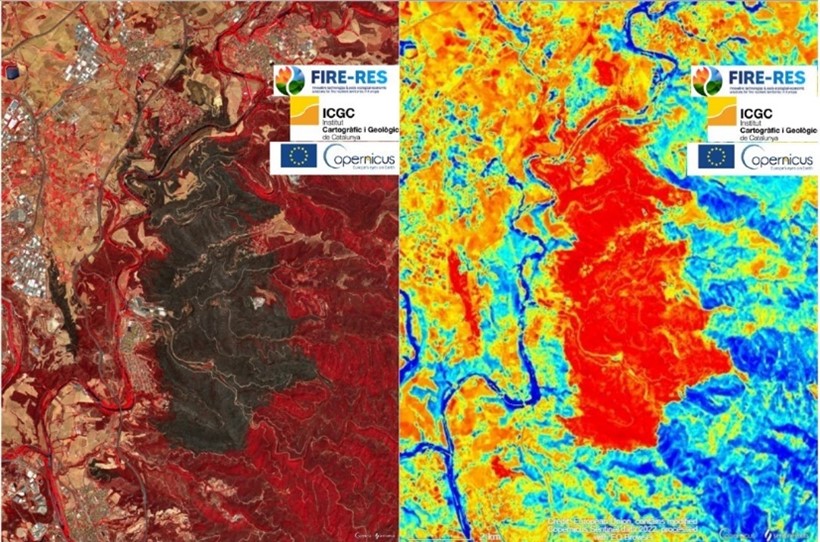
THE VULNERABILITY OF THE REGION OF CATALONIA IN SPAIN
According to Copernicus, the European Union’s Earth observation, during the summer of 2022 Spain, Italy, Portugal, Greece, France and Germany have lost thousands of hectares of land to wildfires during Europe’s record-breaking heatwave. Several wildfires have impacted the FIRE-RES Living Labs, where the project will demonstrate a series of innovative fire management strategies to address Extreme Wildfire Events in Europe.
With 32000 square kilometers, Catalonia is a region located in North-East Spain and it hosts one of the Living Labs. The area is extremely vulnerable to wildfires due to its large forest surface (60%), the high population density, and its dry summers which are predicted to worsen due to climate change. Although a decrease in the number of fires and the burnt surface has been recorded over the last two decades, an alignment of factors could make the situation critical and trigger extreme wildfires.
A DIFFICULT SUMMER FOR CATALONIA
As for many other regions in Europe, Summer 2022 has been particularly difficult for Catalonia in terms of fire management due to a combination of several factors.
Unusually extreme drought has led to a reduction in the water content of live fuel and an increase in fine dead fuel from dead leaves and small branches. In addition, the decline of traditional rural activities has favoured forest growth and fuel continuity. Under unfavourable meteorological conditions, this scenario has led to extreme wildfire events. To make matters worse, the unusually high number of fires occurred simultaneously because of recurring heat waves.
In the middle of June 2022, simultaneous fires (several of them initiated under a dry lightning storm) led to two major fires, one larger than 2000 hectares (Artesa de Segre) and the other around 300 hectares (Castellar de la Ribera, Corbera d’Ebre), in addition to several smaller, potentially dangerous fires in the two areas. Because of the severity of the situation, all available resources were called upon to control the situation. In mid-July 2022, a 1700-hectares fire in Pont de Vilomara triggered the evacuation of 200 people, the confinement of 4500 neighbors, and more than 50 burnt houses.
WHAT CAN WE DO TO REDUCE THE INTENSITY AND SEVERITY OF FIRES IN CATALONIA?
Agroforestry (including agricultural lands and pastures), forest management, and prescribed fires can help increase resilience by at least reducing the intensity and severity of fires in areas by lowering the amount of fuel available. However, based on forest characteristics, geography and climate, it is likely that the impact of wildfires increase in the future. This is why FIRE-RES is working on creating a holistic and integrated fire management strategies to efficiently and effectively address Extreme Wildfire Events in Europe.